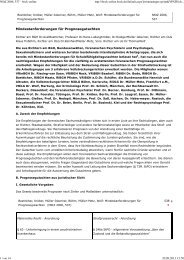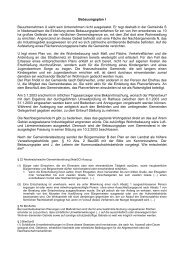Sessar Porto Problems criminology has with criminal law
Sessar Porto Problems criminology has with criminal law
Sessar Porto Problems criminology has with criminal law
You also want an ePaper? Increase the reach of your titles
YUMPU automatically turns print PDFs into web optimized ePapers that Google loves.
6<br />
5. Criminology as an observing science.<br />
Undoubtedly, <strong>criminology</strong> <strong>has</strong> generated an impressive corpus of knowledge which is, more<br />
precisely: would be able to alter some of the legally bound perceptions of reality. A few examples<br />
had already been given. They signaled first systems-specific differences of how to<br />
handle the crime problem. Further examples are scientifically directed against some obvious<br />
counterproductive elements of <strong>criminal</strong> policy and its application in <strong>criminal</strong> <strong>law</strong>. They refer,<br />
among others, to the poor rehabilitating effects of imprisonment (nothing or almost nothing<br />
works in the actual prison systems); especially the detrimental effects of severe penalties on<br />
juvenile delinquents in view of the establishment of <strong>criminal</strong> careers; the spiral between punishment<br />
- social exclusion - recidivism – harsher punishment - further exclusion – and so<br />
forth; the <strong>criminal</strong>ization of drug use <strong>with</strong> the consequence of drug related offences for procuring<br />
drugs (this is much less so in Portugal, see above); the (as I once called it) “tertiary<br />
victimization” of crime victims (<strong>Sessar</strong> 1990) or their manipulation (Elias 1993) should they<br />
be roped in for general <strong>law</strong>-and-order campaigns, and this against the victims’ repeatedly<br />
found rational attitudes towards punishment. The old adage “fiat justitia, pereat mundus” fits<br />
perfectly into what is perceived as a strictly closed social system.<br />
Findings of this kind are intended to alter the penal systems internally, or to open it from<br />
<strong>with</strong>in, that is, even the most spirited studies remain a part of the systems they criticize; they<br />
need them. There is no higher gratification available than to see one’s own insights being accepted<br />
by official policy. Therefore, for being heard it is advisable not to deviate too much<br />
from the ruling penal philosophies which in turn could mean to be swallowed by them.<br />
Should <strong>criminology</strong> desire to stop oscillating between acceptance and rejection, between participation<br />
and exclusion, between up one minute and down the next, then it <strong>has</strong> to develop its<br />
own interests and conceptions in systemic opposition to those of the penal systems (see van<br />
Swaaningen 1997, 192-193; 1999, 7-8). In fact, quite a number of efforts exist to work on<br />
<strong>criminology</strong> as an independent scientific subsystem <strong>with</strong>in the thematic field of crime and its<br />
definitions.<br />
One main example of such endeavours was the emergence of critical <strong>criminology</strong>. A fundamental<br />
version of this branch of <strong>criminology</strong> demanded that essential changes to the penal<br />
system take place, <strong>with</strong> a strong emp<strong>has</strong>is on the abolition of imprisonment. A rational justification<br />
of punishment was generally disputed (van Swaaningen 1997, 206) and the idea that<br />
violence can be overcome by the use of state violence was rejected. Indeed, “to simply respond<br />
by the use of counter-force is no less use of a power even under the title ‘resistance’,<br />
and leads us to very slippery arguments about ‘justifiable’ violence, wars, and homicides"<br />
(Henry, Milovanovic 1996, 220). A lively replacement discourse arose from such attitudes.<br />
To this discourse belonged various forms of civil reparation, conflict resolution, dispute settlement<br />
or restorative justice, <strong>with</strong> abolitionism being the point of reference for many of these<br />
substituting measures. Unnoticed by many of its representatives, abolitionism <strong>has</strong> mainly been<br />
discussed at a moral or idealistic level, not at an empirical level, and therefore it would have<br />
been "fruitful to elaborate abolitionism's theoretical foundation" (van Swaaningen 1997, 206).<br />
Critical <strong>criminology</strong> is closely associated <strong>with</strong> the labeling approach or the social-reaction<br />
approach. Some branches of labeling theory had a somewhat Marxist orientation; the <strong>criminal</strong><br />
justice system was considered to be an instrument of the ruling classes to maintain the existing<br />
social and economic order (Quinney 1974; Sack 1974; Henry, Milovanovic 1996, 141,<br />
<strong>with</strong> further references). One peg was the common experience that suspects from the lower<br />
classes were more frequently (and severely) prosecuted and punished than suspects from the<br />
upper classes. Regardless of its ideological lopsidedness this approach placed the generation<br />
of crime into the realm of crime control while neglecting (sometimes even denying) all forms<br />
of traditional crime causation.

















